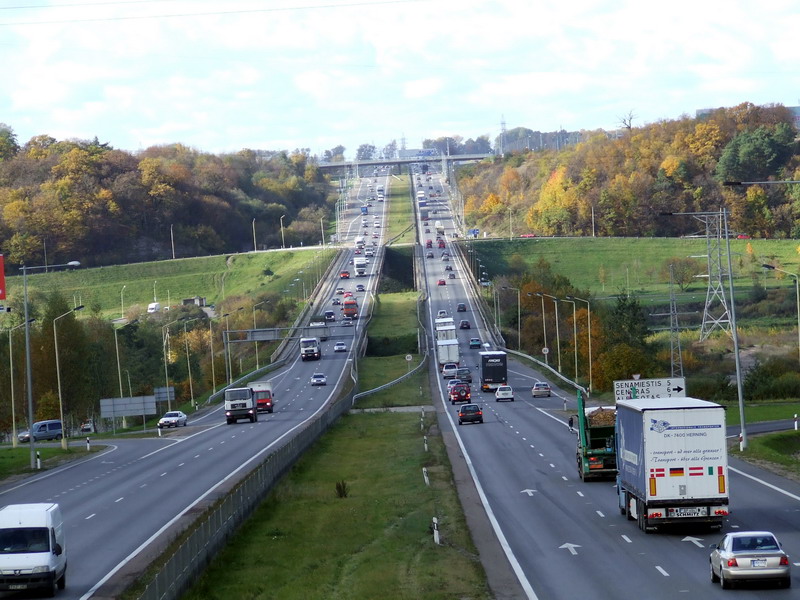|
Urka
The Urka is a river of Kaunas County, central Lithuania. It flows for and has a basin area of . It is a left tributary of the Barupė. The Urka river starts in the Bitvanas Forest, in Kaunas District Municipality. It flows towards north western direction through Kaunas District Municipality and Kėdainiai District Municipality, then empties into the Barupė river next to Labūnava village. Karaliūnai, Butkūnai, Užumiškiai, Kačergiai, Pakapiai, Labūnava villages and Vandžiogala town are located on the shores of the Urka. A small pond is dammed on the Urka nearby its mouth. The hydronym is of uncertain origin. One version is that it derives from Lithuanian verb ''urkioti'' ('to scold, to wig'), another version that it could be of Finno-Ugric Finno-Ugric ( or ; ''Fenno-Ugric'') or Finno-Ugrian (''Fenno-Ugrian''), is a traditional grouping of all languages in the Uralic language family except the Samoyedic languages. Its formerly commonly accepted status as a subfa ... [...More Info...] [...Related Items...] OR: [Wikipedia] [Google] [Baidu] |
Barupė
The Barupė is a river of Jonava District Municipality and Kėdainiai District Municipality, Kaunas County, central Lithuania. It flows for and has a basin area of . It is a left tributary of the Nevėžis. The Barupė river starts next to Žinėnai village, in Jonava District Municipality. It flows northwards, then in Pamelnytėlė turns to the west. It meets the Nevėžis next to Labūnava village. The upper course in channalised. The lower course has a deep valley. The course has a width of and depth of . The flow rate is . A large Labūnava Reservoir is dammed on the Barupė river, also smaller ponds are located on the Barupė valley in Kuigaliai and Labūnava. Sangailiškiai, Kuigaliai, Pėdžiai, Nociūnai, Serbinai, Labūnava villages are located on the shores of the Barupė. A part of river's lower course is protected as the Barupė Landscape Sanctuary. The hydronym is of uncertain origin. The component ''upė'' means 'river' while the root ''bar-'' coul ... [...More Info...] [...Related Items...] OR: [Wikipedia] [Google] [Baidu] |
Vandžiogala
Vandžiogala (Polish: ''Wędziagoła'') is a small town in Kaunas County, Kaunas district municipality in central Lithuania. It is located north of Kaunas city municipality next to Urka brook. A Holy Trinity church was built in Vandžiogala in 1830. A town also has a post office (LT-54073), a community centre building, a school, a library, two cemeteries. A wayside shrine was erected during the 135th commemoration of January Uprising. As of 2011 it had a population of 861. History Vandžiogala was first mentioned in written sources 1384 when a battle with Teutonic crusaders happened. In the chronicles it is written that Vice Komtur of Ragainė Markvard Schulbach was sent to Lithuania to support Vytautas against Skirgaila. The battle was won by Germans: 120 Lithuanians died instantly and the rest either ran away or were taken as prisoners. Komtur took 300 out of those captured and Vytautas took 200. On July 9, 1941, the first large scale mass murder of the Jews in Kaunas di ... [...More Info...] [...Related Items...] OR: [Wikipedia] [Google] [Baidu] |
Labūnava
Labūnava (formerly russian: Лабуновъ, Лабуново, pl, Łabunów) is a village in Kėdainiai district municipality, in Kaunas County, in central Lithuania. According to the 2011 census, the village had a population of 747 people. It is located from Kėdainiai, on the left bank of the Nevėžis river, by its tributary the Barupė. The Labūnava Reservoir on the Barupė is located next to the village. There is a kidergarden, a library, a school, a forestry, an agriculture cooperative, a Catholic church of the Divine, a cemetery, some relics of the former manor (two towers, hunter house). History During the 14th century, Labūnava was under attacks from the Teutonic Knights. It was mentioned for the first time in 1364, in the chronicle of Hermann von Wartberge. The Labūnava Manor has been known since the 16th century. Labūnava has been burnt during Napoleon's campaign in 1812. Labūnava developed greatly during the Soviet era. It became a center of the "Eastern Dawn ... [...More Info...] [...Related Items...] OR: [Wikipedia] [Google] [Baidu] |
Kaunas District Municipality
Kaunas District Municipality (''Kauno rajono savivaldybė'') is one of 60 municipalities in Lithuania. The seat of the municipality is the city of Kaunas, which does not belong to the municipality but is a separate administrative unit. It surrounds the Kaunas City Municipality from the north, west and south, while in the east Kaunas district municipality borders Kaišiadorys District Municipality. Kaunas District Municipality has the second largest international airport in Lithuania (Kaunas International Airport), and is well connected by major roads ( A1 highway and Via Baltica), as well as railways with other cities of Lithuania. Elderships Kaunas District Municipality is divided into 25 elderships: Geography Nature The rivers Neman ( lt, Nemunas), Neris, Nevėžis, Jiesia and Dubysa pass through the Kaunas District area. Kaunas Reservoir borders the east side of the district. It also has 7 lakes and 14 ponds in the area. The largest forests are: Dubrava, Padauguva, V ... [...More Info...] [...Related Items...] OR: [Wikipedia] [Google] [Baidu] |
Lithuania
Lithuania (; lt, Lietuva ), officially the Republic of Lithuania ( lt, Lietuvos Respublika, links=no ), is a country in the Baltic region of Europe. It is one of three Baltic states and lies on the eastern shore of the Baltic Sea. Lithuania shares land borders with Latvia to the north, Belarus to the east and south, Poland to the south, and Russia to the southwest. It has a Maritime boundary, maritime border with Sweden to the west on the Baltic Sea. Lithuania covers an area of , with a population of 2.8 million. Its capital and largest city is Vilnius; other major cities are Kaunas and Klaipėda. Lithuanians belong to the ethno-linguistic group of the Balts and speak Lithuanian language, Lithuanian, one of only a few living Baltic languages. For millennia the southeastern shores of the Baltic Sea were inhabited by various Balts, Baltic tribes. In the 1230s, Lithuanian lands were united by Mindaugas, Monarchy of Lithuania, becoming king and founding the Kingdom of Lithuania ... [...More Info...] [...Related Items...] OR: [Wikipedia] [Google] [Baidu] |
Kaunas County
Kaunas County ( lt, Kauno apskritis) is one of ten counties of Lithuania The territory of Lithuania is divided into 10 counties ( Lithuanian: singular ''apskritis'', plural ''apskritys''), all named after their capitals. The counties are divided into 60 municipalities (Lithuanian: singular ''savivaldybė'', plural .... It is in the centre of the country, and its capital is Kaunas. On 1 July 2010, the county administration was abolished. Symbols The county's coat of arms can be blazoned as follows: ''Gules, an aurochs head caboshed argent ensigned by a cross Or between his horns enclosed by a bordure purpure charged with ten evenly distributed crosses of Lorraine Or.'' The flag's heraldic blazon is identical, since the flag is a banner of the arms. Municipalities The county is subdivided into municipalities: References External linksSocial and demographic characteristics of Kaunas County [...More Info...] [...Related Items...] OR: [Wikipedia] [Google] [Baidu] |
Kėdainiai District Municipality
Kėdainiai () is one of the oldest cities in Lithuania. It is located north of Kaunas on the banks of the Nevėžis River. First mentioned in the 1372 Livonian Chronicle of Hermann de Wartberge, its population is 23,667. Its old town dates to the 17th century. The city is the administrative centre of the Kėdainiai District Municipality. The geographical centre of the Lithuanian Republic is in the nearby village of Ruoščiai, located in the eldership of Dotnuva. Names The city has been known by other names: ''Kiejdany'' in Polish, ''Keidan'' (קיידאן) in Yiddish, and ''Kedahnen'' in German. Kėdainiai other alternate forms include Kidan, Kaidan, Keidany, Keydan, Kiedamjzeÿ ("j" /e/), Kuidany, and Kidainiai. History The area was the site of several battles during "The Deluge", the 17th century war between the Polish–Lithuanian Commonwealth and Sweden. In 1655 a short-lived treaty with Sweden, the Union of Kėdainiai, was signed by two members of Radziwiłł family ... [...More Info...] [...Related Items...] OR: [Wikipedia] [Google] [Baidu] |


